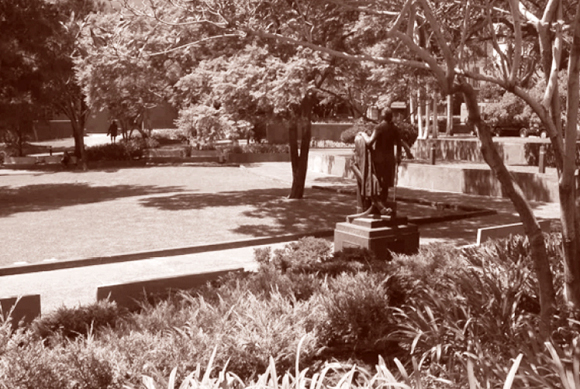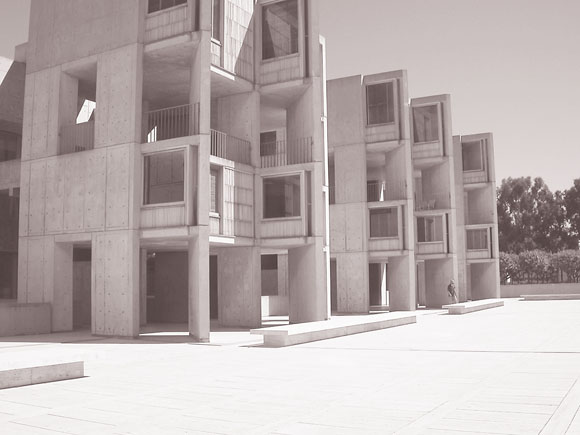
The majority of architects are not involved with the practice of historic preservation and are not familiar with the regulations that can serve to protect historic architecture and landscapes. However, as California continues to develop, architects are increasingly likely to be asked to modify or demolish historic properties. Knowledge of the historic preservation process can no longer be confined to a few specialists; it must become a necessary part of every architect’s professional expertise.
The State Historical Resources Commission is central to preservation practice in the State. The Commission forms preservation policy for California and acts as gatekeeper for the listing of properties to the National Register of Historic Places and the California Register of Historical Resources. The benefits of listing, along with the purely honorific, include safeguards under our environmental laws that would make modification or demolition of the resource more difficult. A listed building allows commercial property owners to capture the preservation tax credit, which has proven to be an effective financial incentive. However, as a listing can slow down or impede demolition and development, affecting property values and property rights, rulings are often controversial; hence, the Commission’s acts are not always perceived to be beneficial by all.
The Commission
The authority of the Commission comes from the National Historic Preservation Act of 1966, which mandated the formation of the Office of Historic Preservation and the appointment of the State Historic Preservation Officer. The statutes are embedded in the Public Resources Code. The form of the modern Commission was shaped in 1984, when the Office of Historic Preservation (OHP), itself founded in 1975, formed its first Commission. It is composed of nine appointed individuals who serve four-year terms. Five members must be from professional disciplines: history, prehistoric archaeology, architectural history, and architecture. Additional members cover the areas of folklife and ethnic history, and two members are from the public and may be appointed by the Governor to cover particular areas of interest.
The chair of the Commission runs the quarterly meetings, in which the Commission hears nominations to the National Register of Historic Places and the California Register of Historical Resources, as well as other landmark programs. The chair makes sure the meetings are procedurally correct, in essence ensuring that there is fairness in the process. The commissioners (as a group) cannot have private discussions, due to state public meetings regulations, and they arrive at the meeting not knowing how their counterparts will vote. This makes for interesting discussions, as the chair tries to guide the group through the thicket of arguments for and against the listing of the resource. As the Commission is fairly professionalized, the discussions involving an archaeological site or a building or landscape can be quite detailed. Commissioners often change their mind in the course of deliberations, and split votes are quite common.
Nominations are received by the staff, which then issue staff reports recommending listing or denial of listing. Given the size and population of California, the state does not have a good track record for the number of nominations and listings in the registers as compared to other states. However, the Commission has been able to list buildings and sites that are reflective of the remarkable diversity of cultures in our state.
The “easy” nominations usually involve a local preservation group that prepares a reasonable nomination that qualifies under one of the four criteria for listing: associative value to events (A) or persons (B), design or construction value (C), and information value (D). In this manner, we are able to list the vast majority of the nominations that come into OHP, such as historic houses, churches, office buildings, and burial sites.
The buildings and sites that are active development projects are considerably more difficult. In these cases, a finding of eligibility inevitably slows down a project, as additional oversight is necessary, but it does not by itself prohibit the demolition of a building or site.

Sometimes developers actually use the Commission to try to stop competing developments. A case in point is the Santa Anita Racetrack (1934 and thereafter, by Gordon Kaufman and others), which had been a WWII Japanese internment camp. The developer of a retail complex on a neighboring site wrote a nomination for the racetrack, essentially to block a larger retail complex from building on it. The Commission heard the nomination and voted to list the racetrack over the owner’s objections, recognizing the need to understand aspects of our past that illuminate the history of the minority groups that make up significant portions of our population. Such actions are, however, in some sense an abuse of an otherwise honorable process.
Another significant and problematic case is the Salk Institute for Biological Studies (1959-66) by Louis I. Kahn, inarguably one of the most important California buildings of the twentieth century. The Salk was in the process of expanding, having already built a very controversial addition (the East Building) by Anshen and Allen in 1995. The neighborhood community raised issues about the limits of the new development, largely focusing on views and traffic. The Commission, however, was concerned about the preservation of the setting of this architectural monument.
All parties agreed the Salk should be listed. The controversy was over the precise boundaries of the resource, as the Salk insisted that an earlier proposed boundary of 100 feet around the major laboratory building was enough to safeguard the integrity of the site. The Commission was split over whether to go along with this, propose a larger adjusted boundary, or simply require the full property line as the resource boundary.
After several unsuccessful motions proposing alternative boundaries failed, the Commission voted to hear the matter at a later date and ultimately voted for the full boundary, against the owner’s wishes. The vote was understandable, given the institution’s track record and the outpouring of support from major institutions and practitioners worldwide. The Commission determined that properties as important as the Salk need to be protected, period.

The Commission’s Committees
The Commission can influence preservation policy in other ways than the listing of properties. One avenue is the formation of committees that are tasked with specific work in the areas that the Commission and the State Historic Preservation Officer (SHPO) think are important. The committees are composed of historians, academics, governmental officials, and preservation consultants who volunteer their time.
The Commission has seven active committees. For example, we have a legislative issues committee to track what’s going on in the Assembly and Senate, especially in these times of increased attacks on preservation by so-called property rights groups. Beyond that, the chair has the freedom to select a particular topic or area of interest and appoint a committee to study it, which can be quite useful in advancing the cause of preservation. Two of the recent committees are the Committee on the Resources of the Modern Age, formed by the prior chairperson, Dr. Lauren Weiss Bricker (see “Preserving the Monuments of our Modern Past,” this issue of arcCA), and the Cultural Landscapes Committee, formed by the author.
As the Commission contributes to and edits the Statewide Historic Preservation Plan, California’s policy blueprint, these committees can draw attention to particular resources, increasing their visibility and awareness on the part of the public. The most recent plan contains new sections on Cultural Landscapes, Heritage Tourism, and, importantly, a section on the Recent Past. This last section highlights the architectural contributions of the post-war period, in which California is unmatched in terms of number and quality of resources.
The Commission also serves as an information clearinghouse, connecting preservation organizations statewide and nationwide. Acute budgetary constraints limit the range of activities and programs OHP can run; the Commission and its committees get around the budgetary constraints by partnering with institutions such as the California Preservation Foundation and the Western Office of the National Trust for Historic Preservation, as well as universities and municipalities.
The Outlook
The reality in California is quite grim. The forces of development and greed, property values, and property rights continue to gain strength, and even progressive plans by presumably enlightened developers can pose significant threats to preservation.
A currently unfolding case is the Grand Avenue Plan on Bunker Hill in Los Angeles. The ambitious plan proposes to reimagine Grand Avenue as a cultural and entertainment boulevard by building a number of structures, including a high-rise by Frank Gehry. While we can all applaud the choice of designer, preservationists have cause for concern regarding a little-discussed part of the plan that would tear down the County Courthouse (1958) and possibly the County Hall of Administration (1960) both by Associated Architects—Stanton Stockwell, Paul Williams, Adrian Wilson, and Austin Field and Fry—and re-design the central mall space (officially known as the Paseo de los Pobladores, 1966), by the landscape firm of Cornell, Bridges and Troller.
In order to properly shape this and other projects, continued education about the value of history and the practice of preservation, both in our schools and in the architecture profession, is as vital as the vigilance of the Commission.
Author Luis G. Hoyos, AIA, teaches design and preservation at the California State Polytechnic University in Pomona and is currently Chair of the State Historical Resources Commission.
Originally published 3rd quarter 2006 in arcCA 06.3, “Preserving Modernism.”





